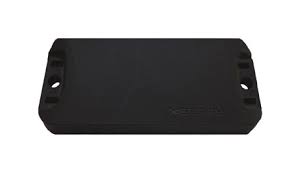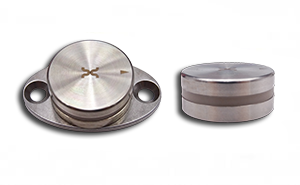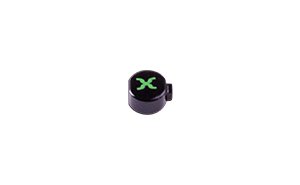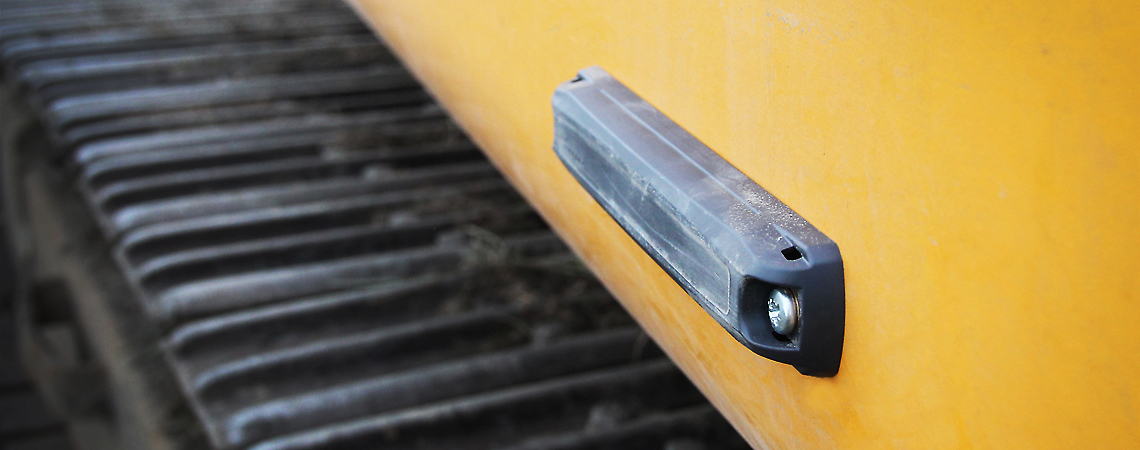

Our customers use RFID tags to control a variety of assets and ancillary items, including packs of timber at a leading port authority, archive document storage boxes, concrete beams, tooling for the food and aerospace industries, leather and footwear products and textiles that are washed in a commercial laundry. Almost anything can be tagged, providing it is big enough to attach the tag or the material of the item allows the tag to be embedded within its structure.
Televisions and other electrical items in protective housings have been tagged to track and potentially prevent their off site movement, safety critical items within vehicles have been tagged so a routine scan of the vehicle contents can determine whether the necessary equipment is present. We are approaching the point where if it can be barcoded it can be tagged and in some cases we can tag items we cannot barcode!
Tags can be very small, and very rugged and also been designed for specific processes including the laundry industry where they have to withstand constant high temperature washing cycles, with scanners reading the tags attached to the the textile items that are travelling along a high speed conveyor belt.
Tags are available encapsulated in a variety of protective materials, for example Kevlar, which is popular in harsh environments. If the environment is particularly harsh then the scanners or readers may need to be special for example in the oil and gas industry they may need to be outdoor rated and explosion proof.
Paper tags are usually low cost compared to tags that are specially encapsulated for use in a particular environment, they are usually first choice for ‘one off’ applications, typically in retail where they will be discarded or destroyed after one usage. They are frequently used in carton and pallet case applications, the ‘Dogbone’ tag is a popular choice and performs well on highly detuning materials. The tag is ‘orientation sensitive’ meaning that it can be best read from a particular direction, if insensitivity to orientation is required the ‘Frog’ tag can be a good choice, this tag has four antennae radiating out from the chip rather than the two of the Dogbone tag. It can be more easily read by door portal readers from any orientation, typically it is more expensive than a Dogbone tag. Both types of tag are available in a wide range of formats and specifications, the EPC memory is typically available from 32 bit to 496 bit and the user memory from 32 bit to 512 bit. Both types depending on the substrate used can be overwritten with human readable information or a company logo for example.
The Dogbone and Frog types are just two of the commonly available types, others include the Large Dipole, Short Dipole and Metal Skin tags to list just a few. Once again these are available in a wide range of formats and memory specifications.
There are tags available for just about every application, when selecting tags all operating conditions and requirements must be taken into account, also the facilities such as printers or encoders that are available to an end user.
If you have a particular requirement the best idea is to ask advice before proceeding to buy tags and ancillary equipment, frequently printing and encoding can be undertaken by a specialist firm for a small fee.
 On Metal tags are designed specifically for attaching to metallic surfaces and will more often than not perform badly if attached to a non-metallic item. They are available in a wide range of formats and can be stuck onto a surface, screwed, riveted etc. the fixing choice being dependent on a variety of factors. As with all other RFID tags they are available with a vast array of memory options, orientation options and can of course be available with unique unalterable serial numbers or blank so that an ID can be set by the user. Frequently On Metal tags are used in harsh environments such as drying booths in paint spraying shops or attached to beer kegs or gas bottles that are exposed continually to the elements. They also find use in process control in various industries where they are attached to pipework or valves to assist in the correct identification of a particular piece of equipment. The tags are encapsulated in various materials and dependent upon the type of encapsulation and quantity can be personalised with various information etched or printed onto them.
On Metal tags are designed specifically for attaching to metallic surfaces and will more often than not perform badly if attached to a non-metallic item. They are available in a wide range of formats and can be stuck onto a surface, screwed, riveted etc. the fixing choice being dependent on a variety of factors. As with all other RFID tags they are available with a vast array of memory options, orientation options and can of course be available with unique unalterable serial numbers or blank so that an ID can be set by the user. Frequently On Metal tags are used in harsh environments such as drying booths in paint spraying shops or attached to beer kegs or gas bottles that are exposed continually to the elements. They also find use in process control in various industries where they are attached to pipework or valves to assist in the correct identification of a particular piece of equipment. The tags are encapsulated in various materials and dependent upon the type of encapsulation and quantity can be personalised with various information etched or printed onto them.
 Frequently assets that need to be tracked are used or stored in environments where conditions are hostile for example in fabric items that require high temperature washing with chemicals as in a commercial laundry. Or in a factory where washing with oils and exposure to high temperatures such as in paint spraying bays are everyday occurrences. Tags for applications such as these are specifically designed for the task, the ones for a laundry may well be fabric based and suitable for the extreme temperatures and flexing that will be experienced in a laundry. Factory ones will typically have an IP rating of 69 and be stainless steel bodied and capable of withstanding complete immersion in liquids and resistant to chemicals and extremes of temperature. Usually there is an RFID tag for all process requirements.
Frequently assets that need to be tracked are used or stored in environments where conditions are hostile for example in fabric items that require high temperature washing with chemicals as in a commercial laundry. Or in a factory where washing with oils and exposure to high temperatures such as in paint spraying bays are everyday occurrences. Tags for applications such as these are specifically designed for the task, the ones for a laundry may well be fabric based and suitable for the extreme temperatures and flexing that will be experienced in a laundry. Factory ones will typically have an IP rating of 69 and be stainless steel bodied and capable of withstanding complete immersion in liquids and resistant to chemicals and extremes of temperature. Usually there is an RFID tag for all process requirements.
 RFID tags can be embedded in virtually any product and the following applications of embedding are just a few:-
RFID tags can be embedded in virtually any product and the following applications of embedding are just a few:-
Very often a tag designed for embedding will have a mark or a notch on the casing of it to indicate the best orientation of the tag for reading the emitted signal at the maximum strength. For example tags designed for embedding in concrete products such as beams will have a notch cut into one edge, the tag should be attached to the internal steelwork so that this notch points towards the direction from which the tag is meant to be read.
As is usual with tags, the ones designed for embedding are available with a very large range of memory options and also casing options to ensure the long term functioning of the tag.
 We can supply a range of RFID tags that offer more functionality than just identification of an item, the tags that can provide this extra functionality have an onboard battery backup that is activated when the tag is installed. The tag uses the battery power to monitor and record environmental information which can be downloaded to a hand held or fixed reader when the tag is ‘interrogated’. For example the tag may be used to record the ambient temperature around an item and will be able to notify if both high and low specified temperatures have been exceeded or not kept to. There is frequently a misconception that these battery assisted tags will have a greater read range than a purely passive tag, this is not the case, the tag still activates on the received signal and energy from a reader. This is kept to legislated limits regarding power output, the tag has approximately the same read distance as a passive tag, the battery power is used to monitor and record.
We can supply a range of RFID tags that offer more functionality than just identification of an item, the tags that can provide this extra functionality have an onboard battery backup that is activated when the tag is installed. The tag uses the battery power to monitor and record environmental information which can be downloaded to a hand held or fixed reader when the tag is ‘interrogated’. For example the tag may be used to record the ambient temperature around an item and will be able to notify if both high and low specified temperatures have been exceeded or not kept to. There is frequently a misconception that these battery assisted tags will have a greater read range than a purely passive tag, this is not the case, the tag still activates on the received signal and energy from a reader. This is kept to legislated limits regarding power output, the tag has approximately the same read distance as a passive tag, the battery power is used to monitor and record.